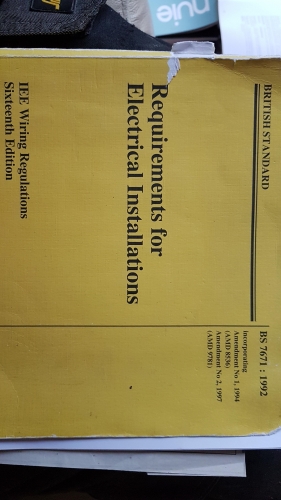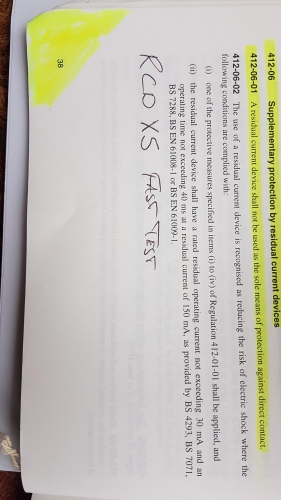AJJewsbury:
The product standard ( BS 7288) says they are not suitable for providing Additional protection.
It doesn't quite say that. That would put it in the the same category as a BS for chocolate tea pots. I think what's written could equally be read as "the the device doesn't protect the upstream part of the circuit and that additional protection [for that - if any is required] will have to be provided elsewhere".
They do not provide isolation as they do not meet the minimum contact clearance.
Oh yes they do - on a SRCD you just pull the plug out (just like for unswitched BS 1363 sockets). Besides is there actually a requirement for devices providing additional protection only to provide isolation? 531.1.1 only talks about devices providing ADS - additional protection is technically a different beast.
- Andy.
Well, this is interesting. I don't want to disagree with you Andy, simply provide some points for discussion.
First, a couple of points on whether an RCD is always a device providing ADS:
Now on to "isolation". To be honest, we don't know what the purpose of the "isolation" required for a device providing ADS actually is, because BS 7671 (and the international standards HD 60364 / IEC 60364) doesn't tell us in simple terms ... So, I guess, possible options include something along the lines of:
The BS says these devices only provide "supplementary" protection they require upstream "Additional Protection"
RCDs do not provide protection for upstream only downstream of the device.
Do you agree they are not suitable when Additional Protection is required?
I think it's simply not clear.
Is "additional protection" a form of ADS anyway
BUT then again it could be argued that a fuse "blowing" does not, strictly, provide isolation ...


Also I am still making alterations and additions to electrical circuits protected by BS4293 RCDs, but they are no longer listed in the current Wiring Regulations, so is that wrong, is there an issue about using these to provide RCD protection? If there is an issue millions of consumer units with working and safe RCDs that need replacing to undertake minor alterations and additions to existing electrical installations.
We're about to take you to the IET registration website. Don't worry though, you'll be sent straight back to the community after completing the registration.
Continue to the IET registration site